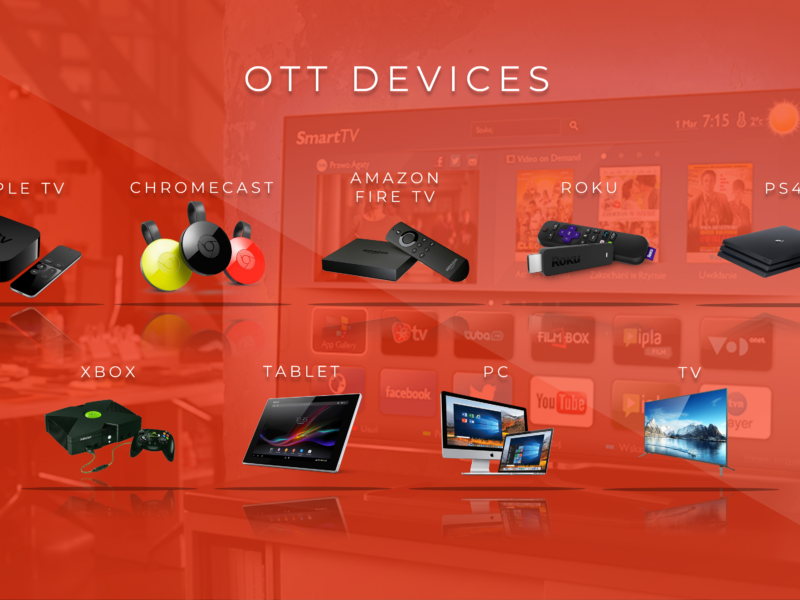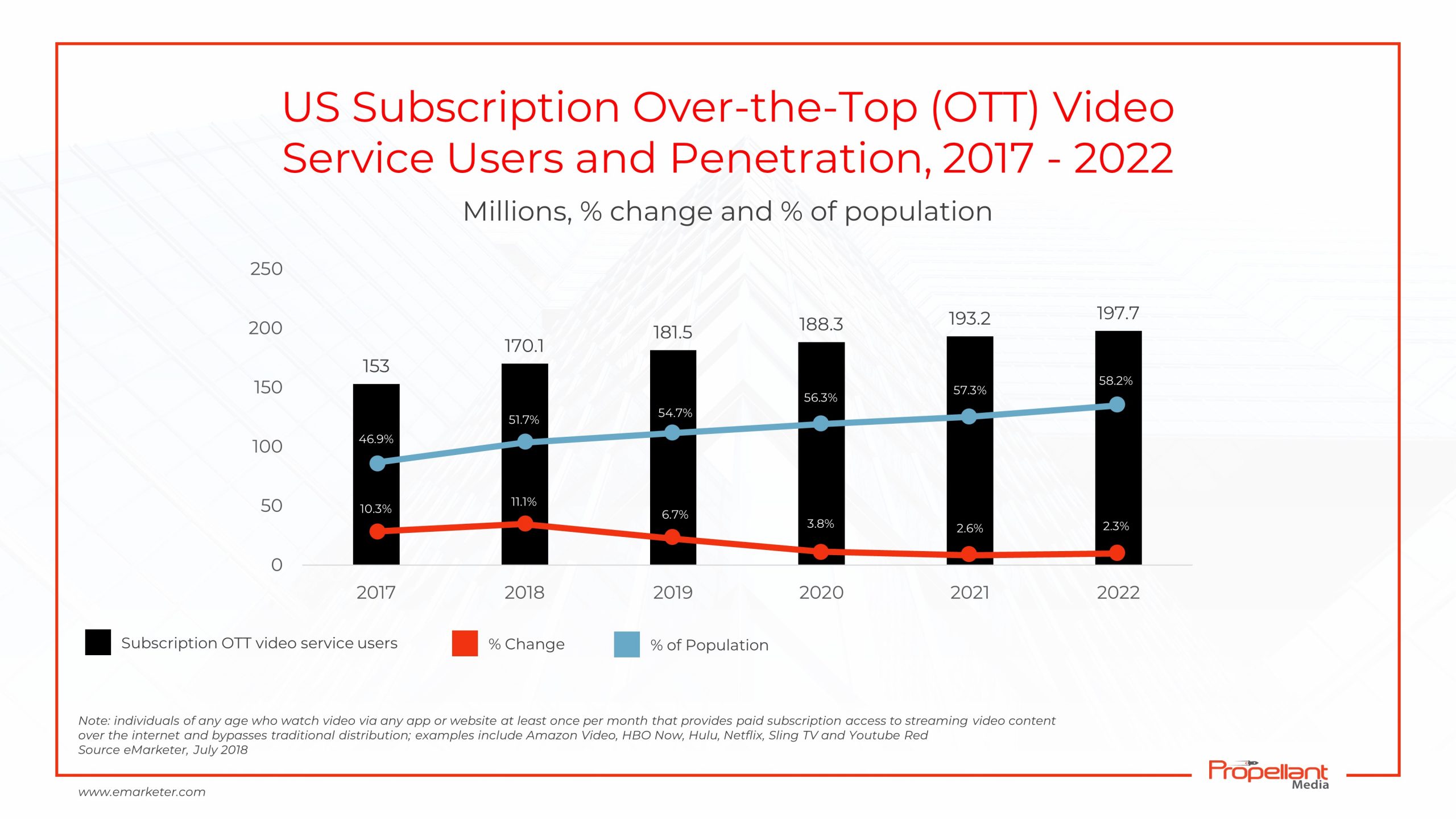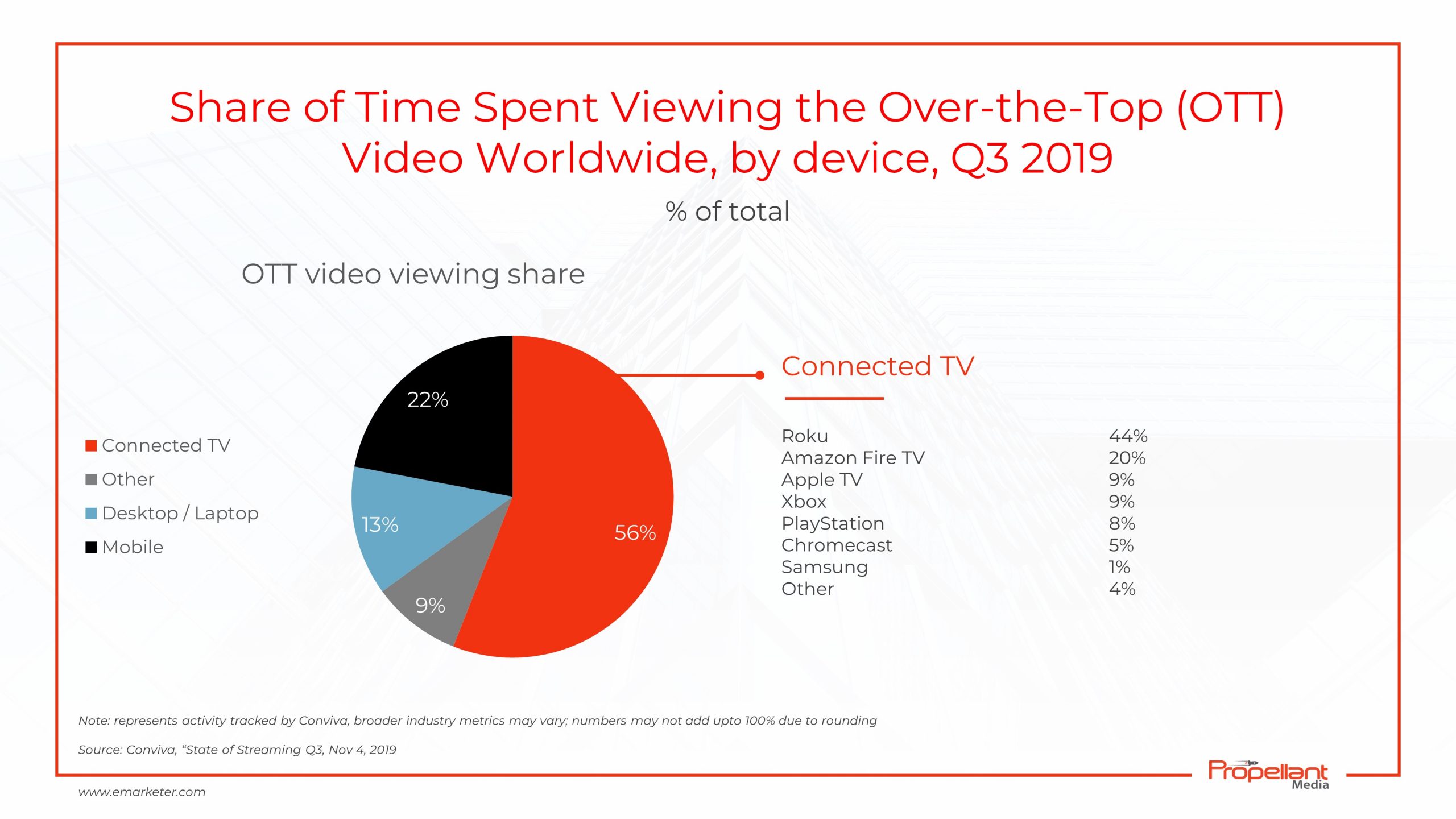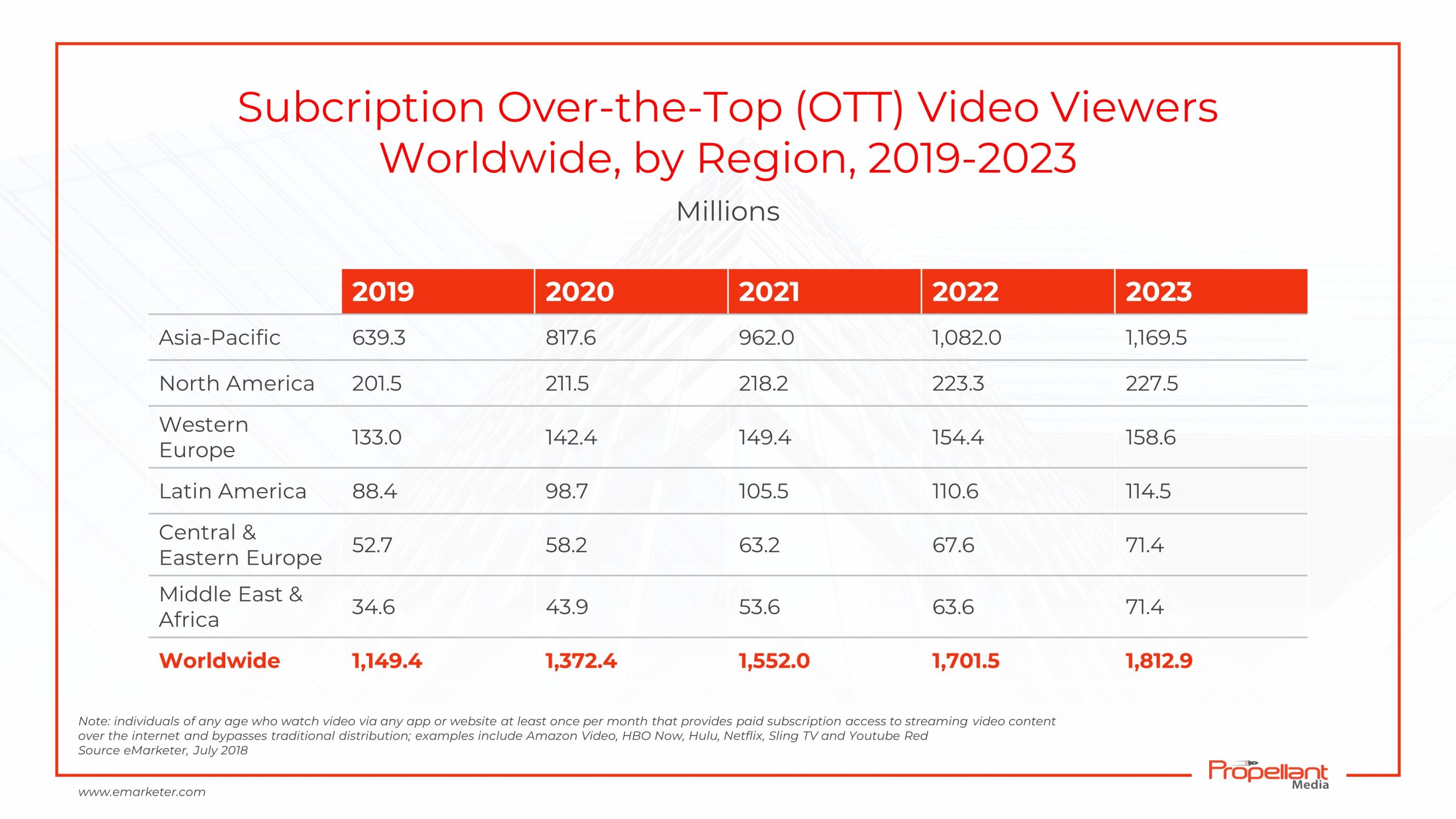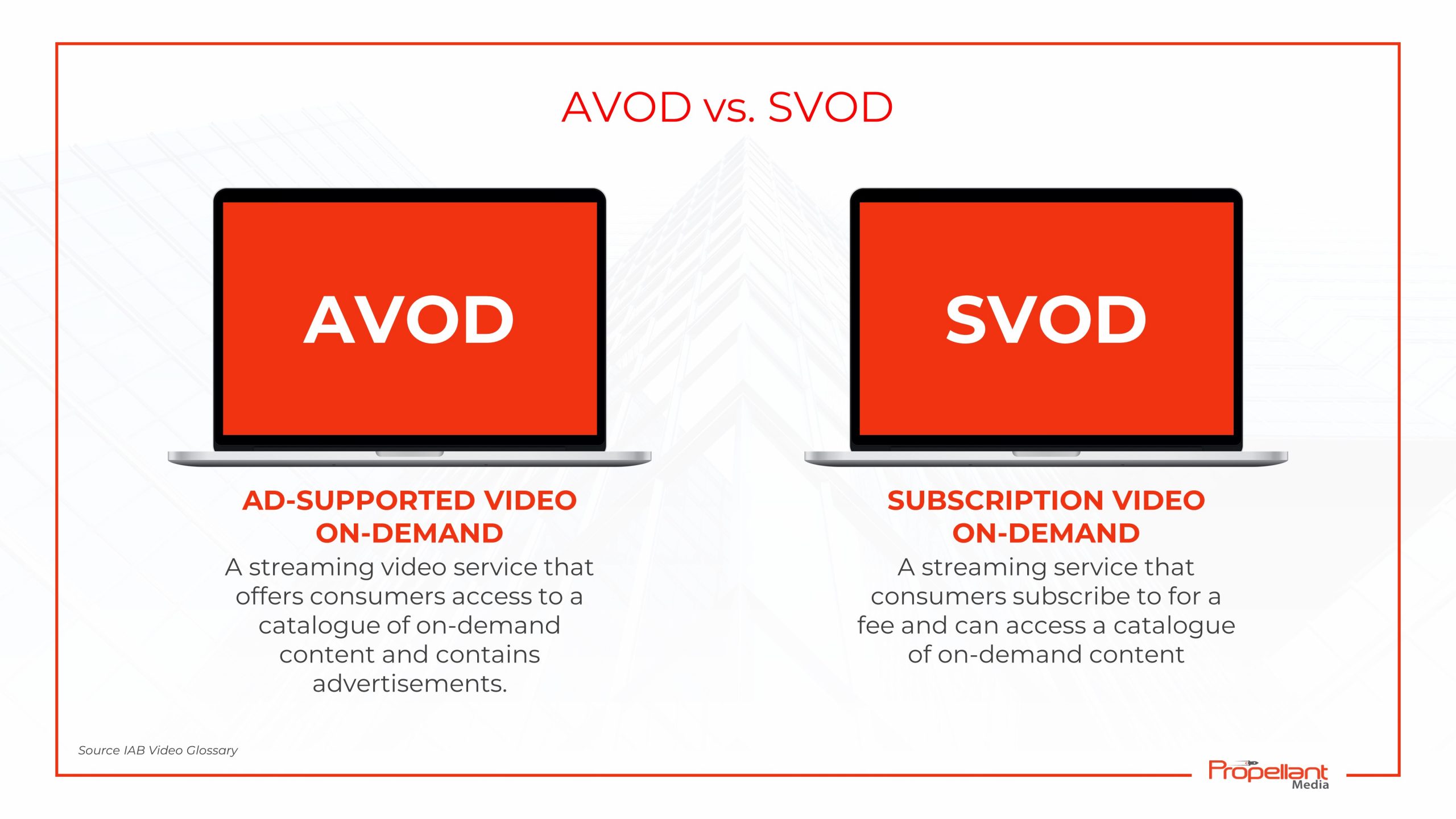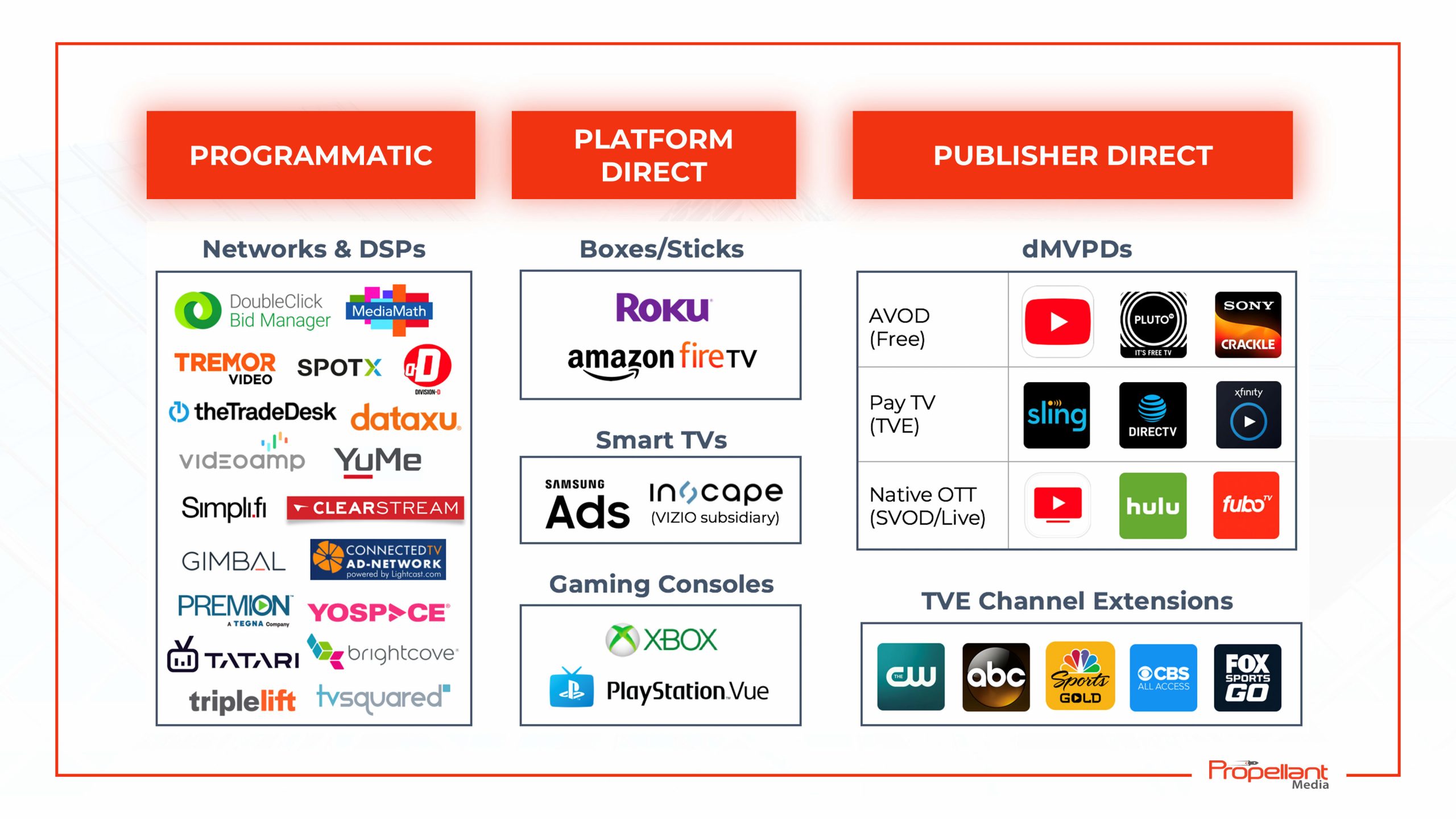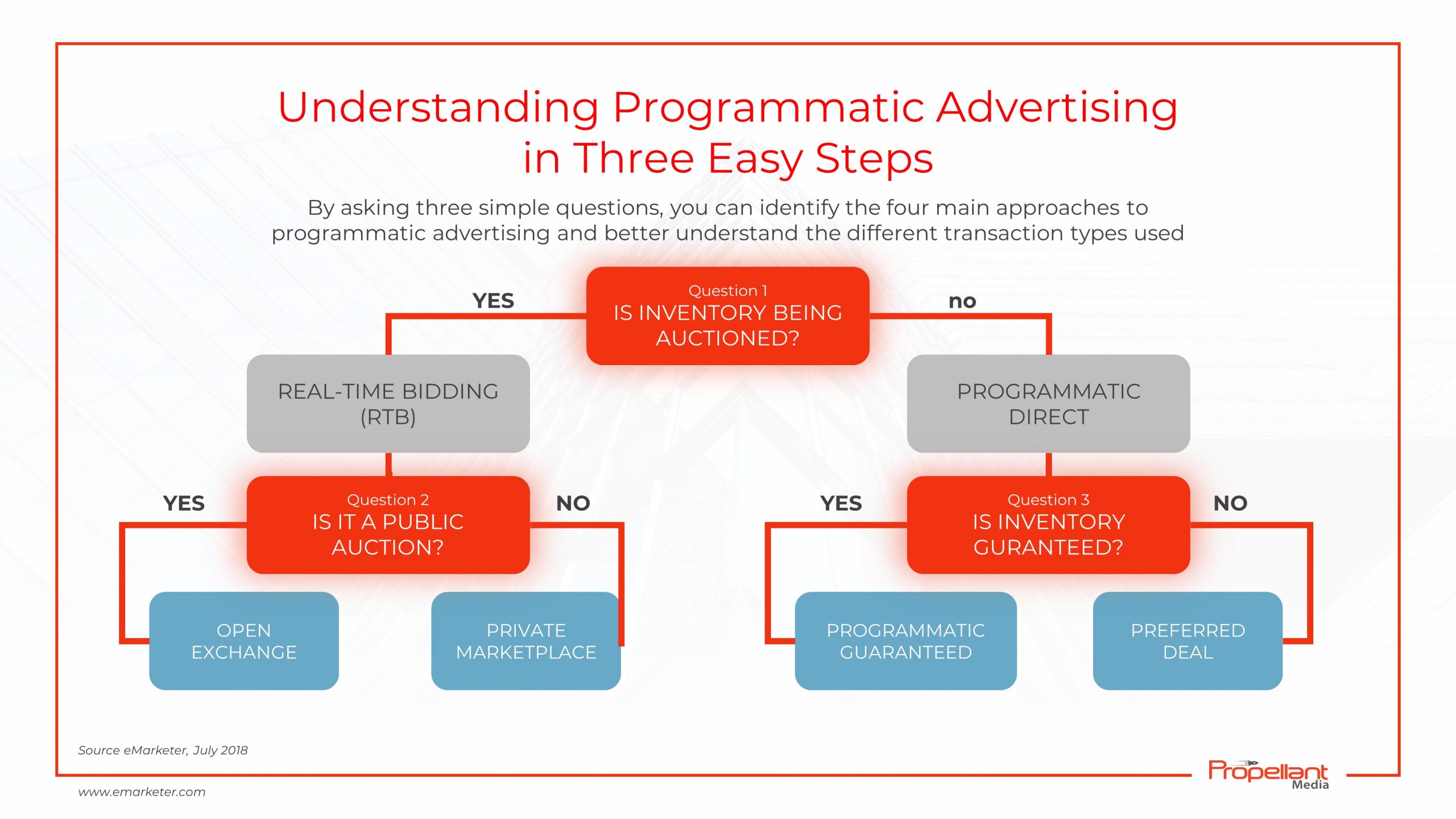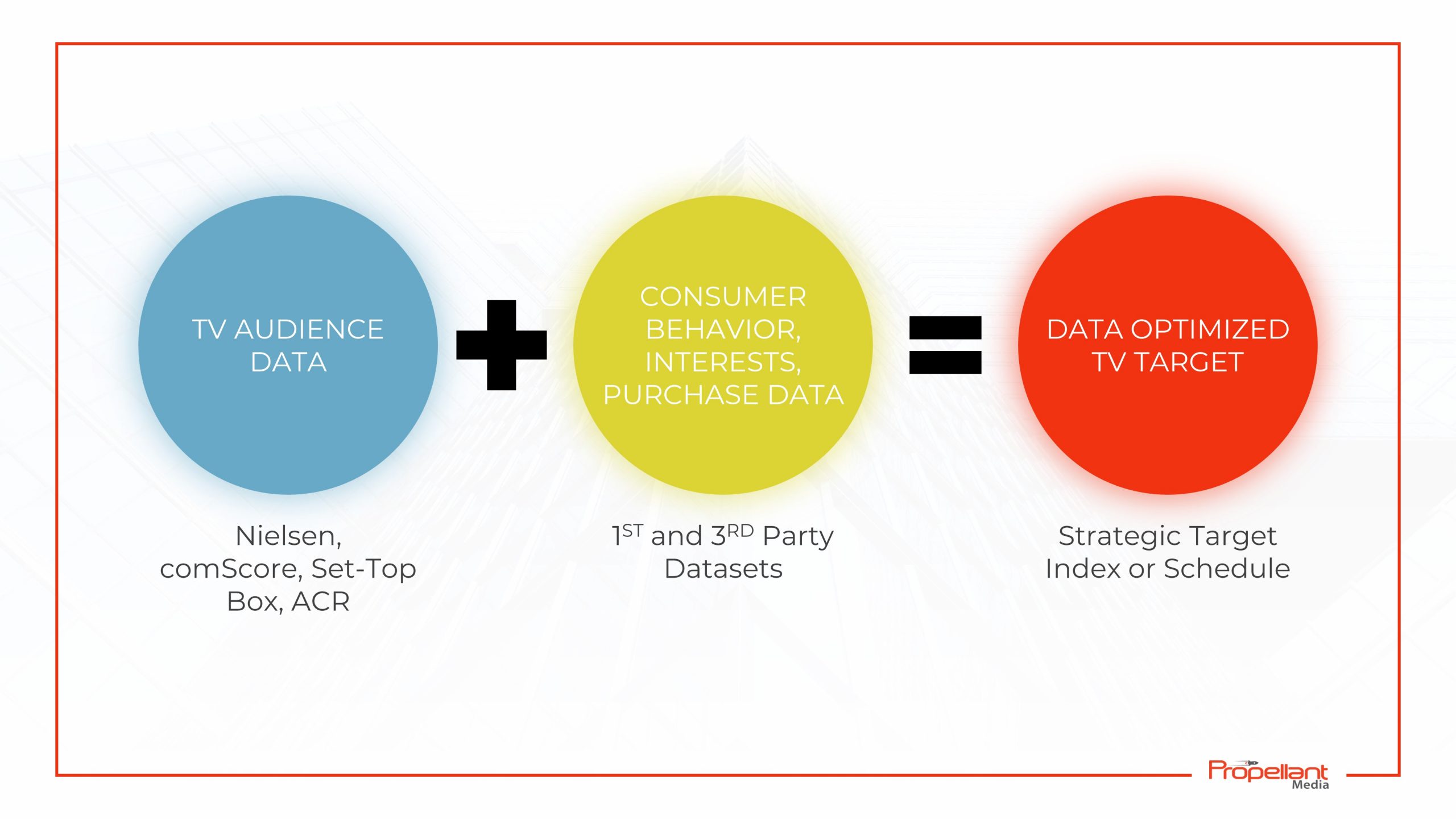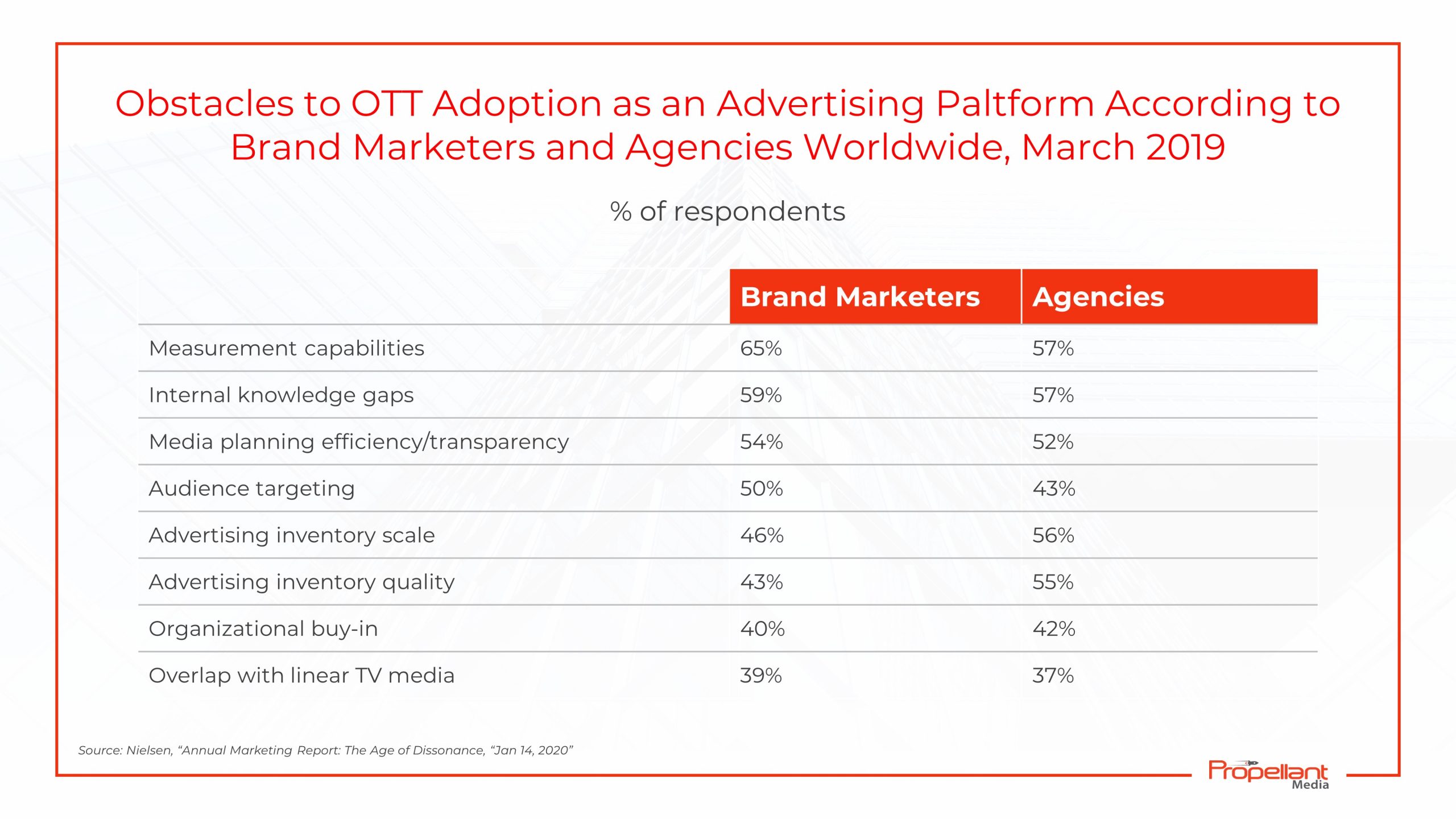As SMB’s and corporations work to locate and adopt new digital advertising platforms, Over The Top TV (OTT Advertising) and Connected TV Advertising are accelerating faster than any other digital marketing channel. People are consuming more and more video content through their smartphone devices as well as through laptops and desktops. YouTube began the trend of video adoption into smartphones and laptops. But now that sense of comfort has proven consumers can watch longer form content. So when you see trends of consumers adopting OTT Platforms at a higher rate, there presents the cost effective opportunity for advertisers to engage with customers in ways they may not have in the past.
With an estimated 155 million US adults now accessing streaming video with services like YouTube TV, Hulu, CBS All Access, Sling, and devices such as Roku, Amazon Fire TV, and Apple TV, a new medium known as OTT (over-the-top) advertising has emerged. This allows brands to reach their audiences directly within their living rooms and on their mobile smartphone devices.
According to Justin Croxton at Propellant Media, “OTT Advertising presents a unique opportunity for businesses to reach consumers with direct precision, tying audience data with those who are watching the same TV shows as broadcast on linear TV. Couple that with the ability to scale your advertising efforts and measure walk-in and online conversions from those who have seen those ads; OTT Advertising is becoming the go-to for SMB’s, agencies and brands.”
In this guide, we walk through the wonderful world of OTT Advertising.
TABLE OF CONTENTS
-
- What Is Connected OTT Programmatic Advertising?
- Why Enterprises Are Leveraging OTT Video
- Top Benefits Of OTT & Connected TV Advertising
- Where OTT Ads Are Displayed
- OTT Platforms To Utilize
- Demand Side Programmatic OTT Platforms
- How Do You Buy OTT Ads?
- OTT Video Content Best Practices
- Combined Data With OTT Audience Targeting
- Ways to Measure OTT Advertising Success
- Challenges of OTT Advertising
- The Future of OTT Advertising
What Is Connected OTT Programmatic Advertising?
OTT (over-the-top) advertising allows marketers and brands to directly reach viewers over the internet through streaming video services or devices such as smartphones, laptops, and connected TV (CTV) devices. The term “over-the-top” comes from the ability for viewers to bypass traditional TV providers such as Xfinity and DirecTV that control media distribution, thus giving advertisers the ability to reach their audiences directly.
This level of video advertising has presented incredible opportunities for brands in the sense that they no longer have to execute pre-planned broad media buys. No more expensive broadcast TV advertising or an esoteric world around TV broadcast advertising that few SMB’s can play in. Instead, brands and advertisers can go directly to OTT Platforms and Media Companies and buy OTT inventory space programmatically while coupling it with audience data to reach the ideal market.
There is a misnomer that platforms like Netflix constitute OTT Advertising. But it is mainly those platforms that allow for 15, 30 second, and 60 seconds video spots where commercial inventory is available via streaming apps, devices and websites.
Types of OTT Ads
Now that you’ve understood what OTT advertising is, it’s time to look at the multiple formats of OTT advertising. They offer unique advantages, depending on your campaign goals and target audience. Here are the most common types and how they can best serve your marketing needs:
- Pre Roll Ads (15 to 30 seconds): These ads appear before the chosen content starts. They offer high viewability but can be troublesome if not executed well. Keep them short, engaging, and relevant to the surrounding content to grab the viewer’s attention before they hit the skip button.
- Mid Roll Ads (30 seconds to 2 minutes): These ads appear during commercial content breaks and offer a natural pause in the content to tell your story. However, you need to use them strategically. Too many mid-roll interruptions can lead to viewer frustration. Consider the program length and natural breaks when placing mid-roll ads.
- Post Roll Ads: These ads appear after the content finishes. Post roll ads are ideal for leaving a lasting impression. Use them to remind viewers about your brand or product, display a special offer, or encourage them to visit your website.
- Native Ads: These ads blend into the streaming services and appear as sponsored content on display ads. They can be a great way to capture attention subtly.
How Does OTT Advertising Work?
OTT ads might sound complex, but the core process revolves around automation and precision targeting. Let’s understand the process.
- Campaign Setup: You, the advertiser, define your goals, target audience, and budget. This means you need to specify demographics, interests, and desired ad formats (preroll, midroll, etc.).
- Supply and Demand Marketplace: Programmatic platforms are a marketplace where publishers (streaming services) offer their ad inventory or available ad space, and advertisers bid for that space.
- Data Drives Decisions: The platform utilizes data from various sources to deliver targeted ads. This data could include viewer demographics, viewing habits, and device usage.
- Real-Time Matching: The platform matches your campaign criteria with the most relevant ad inventory from participating streaming services using complex algorithms. This happens live for efficient allocation of ad space.
- Ad Delivery and Optimization: Once matched, your ad is delivered to viewers on their chosen devices, whether it’s a smart TV, smartphone, or tablet. The platform continuously monitors campaign performance and allows you to optimize your strategy based on real-time data.
Why Enterprises Are Leveraging OTT Video – The Benefits
SMB’s have been shut out of the broadcast advertising space for quite some time. Coupled with the need for smaller brands and SMB’s to drive customers and cash flow in the short term, OTT Advertising is giving brands a new opportunity to drive top, middle, and sometimes bottom-of-funnel patrons to their enterprises.
There are many reasons why more and more brands are adopting OTT Advertising. And in most cases, the benefits far outweigh the challenges and setbacks in leveraging Over The Top TV Advertising.
Viable Complement To Your Overall Media Mix
Some people look at video advertising as top-of-funnel awareness-building tactics. Still, we have seen video tactics, and, in this case, OTT Advertising complements driving people down the funnel while reaching people who are in-market due to the audience targeting and psychographic targeting capabilities available with programmatic display advertising. When you combine OTT Advertising with certain powerful targeting tactics, such as household addressable geofencing, you gain more efficiencies in your ad spend compared to traditional linear TV advertising.
Larger Audience Reach
More than 50 million subscribers are expected to ditch their cable and satellite boxes by next year. This is a steep increase from the numbers estimated a few years ago. And as noted by emarketer, the adoption of ott platforms such as YouTubeTV and Hulu continues to grow.
Strong Audience Targeting Opportunities
Certain platforms require you to buy directly from them. Hulu is a great example that allows for direct buys; however, the monthly minimums are greater. Other programmatic platforms allow for the chance to utilize mobile and smart TV IDs and serve ads to those consumers regardless of the platforms they go on. The power of OTT Advertising is that you can build an audience based on their physical location, demographic, income, and psychographic variables and serve ads to those individuals for some time.
Micro & Geotargeting
As mentioned with addressable household geofencing, brands can micro target people all the way down to the contours of a building or at the individual household level and curate an audience at the individual zip code level compared to traditional broadcast, which requires targeting at the county and city level.
Powerful Analytics
Brands can pull granular analytics on data of their advertising efforts to help inform how best to optimize their ad spend. In addition to the actual audience targeting capabilities that are available, below are examples of data variables you can pull from your OTT Advertising:
- Budget/Spend
- Pacing
- Impressions
- Clicks
- Device Level Performance
- Behavioral Data
- Publisher/Domain
- Click Through Rate (CTR)
- Cost Per 1,000 Impressions (CPM)
- Pause/Mute Rate
- % Of Video Watched
- Cost Per Click (CPC)
- Cost Per Action (CPA)
- View Through Conversions
- Walk-In Conversions
To be clear, those last two points are powerful conversion tracking tools that most brands are unaware of. You can measure those who have converted on your website (form submissions, purchases, online actions) OR walked into your storefront AND saw one of your OTT Ad Spots. We call this conversion zone tracking, and many advertisers are using it to optimize their ad spend.
Flexibility In Budget
Unlike traditional broadcast TV advertising, you can start with a $2,000/month budget and scale up or down based on brand needs and overall performance. Some OTT Platforms, depending on whether it’s a direct OTT IO buy, can require higher monthly spends, but most programmatic platforms allow for flexibility in spending.
Cheaper Than Traditional Broadcast
Traditional broadcast and linear TV buys tend to cost more in terms of monthly budget minimums. In addition, while OTT Advertising can cost $25 – $40 CPMs (cost per 1,000 impressions/TV spots), traditional TV advertising rates can range from $40 to $200 CPM Rates or more depending on the demand. When you couple that with the inefficiencies in ad spending and reaching people you don’t intend to target with limited audience targeting via broadcast advertising, the cost of traditional broadcast advertising tends to be more expensive than OTT advertising.
OTT Appeals To A Younger Audience
About 60% of young adults say they watch TV primarily through streaming services, such as OTT apps.
Where viewership consolidates, so does ad spending. OTT ad spending is predicted to hit $2 billion this year, a signal that advertising on streaming services is growing at breakneck speeds. Despite OTT appealing to the younger audience, more and more elders are adopting over-the-top TV and deciding to cut the cord, thus expanding the reach of brands to connect with younger to older audience segments.
Non-Skippable Ads & High Watch Rates
We are seeing watch rates average well over 85 – 90% compared to pre-roll video, which can range from 35% to 60% watch rates. This proves you’re getting an engaged audience and making your ad spending more efficient as well.
How to Create an OTT Advertising Strategy
To succeed in making an OTT advertising plan, it’s best to rely on experts who understand the nuances better. However, here’s a roadmap to guide you:
1. Define your goals and target audience:
- What do you want to achieve? Clarity on your goals helps tailor your approach.
- Who are you trying to reach? Understanding your ideal customer’s demographics, interests, and viewing habits is essential for effective targeting.
2. Set your budget:
- An OTT advertising platform offers flexibility and allows you to set a budget that aligns with your campaign goals.
- Consider campaign durations, desired ad formats, and targeted platforms when allocating resources.
3. Choose your platform partner:
- Before you buy OTT ads, research popular options like Hulu, Disney+, Amazon Fire TV Stick, and Roku, considering your target audience’s viewing preferences.
- Explore programmatic platforms that offer access to a variety of OTT services. It simplifies the buying process.
4. Create High-quality Ad Creatives:
- You’re competing for viewers’ attention in a crowded space. So, create high-quality, engaging ads that resonate with your target audience.
- Explore different ad formats and tailor your message accordingly. Keep pre-roll ads concise and post-rolls memorable.
5. Measure and Optimize:
- Track key metrics like ad impressions, clicks, conversions, and completion rates.
- Analyze this data to identify what’s working and what needs tweaking. Continuously optimize your campaign for maximum impact.
What’s the Difference Between OTT and Connected TV (CTV)
OTT and CTV are two different terms, and there’s a subtle distinction between them.
OTT, or over-the-top, is a broader delivery method. It refers to the entire method of delivering video ads or video content over the internet and bypassing traditional cable TV or satellite TV connections. This includes popular platforms like Netflix, Hulu, Roku, and many others. You can access OTT content on various devices like smartphones, tablets, laptops, smart TVs, and even gaming consoles.
CTV is where things get specific. It refers to television sets that are connected to the internet and allow viewers to access OTT services directly on the big screen. This mainly includes smart TVs, but it also includes streaming devices like Roku, Amazon Fire TV Stick, Apple TV, and Chromecast. These devices turn your regular TV into a smart TV and grant access to many streaming possibilities.
So, the main factor is:
- OTT is the “how”—the method of delivering content.
- CTV is the “where”—the internet-connected devices used to access it.
Where Connected OTT TV Ads Are Displayed
Over-the-top TV video advertisements can display across a plethora of devices (such as Roku or connected TV) and streaming services (such as OTT apps). When combined with the cross-device matching capabilities with Programmatic and DSP networks, the reach across many video platforms is gaining steam and more adoption.
OTT content and video delivery takes place on any device that streams video over the internet, including:
- Streaming devices (Roku, Amazon Fire TV, Apple TV, Chromecast)
- Mobile Devices
- Computers & Laptops
- Smart TVs/Connected TVs
- Gaming Consoles (Playstation, XBox)
Whether it is a 15-second or 30-second spot, those ads will appear across the 1,000’s of channels and TV shows displayed in between the shows when commercials are aired. Do you ever notice how you may get the below message “Commercial Break… We’ll Be Right Back” on YouTube TV at times? This is because YouTubeTV is not a part of the programmatic inventory and thus they would prefer to have their inventory space open rather than sell at a low rate. Over time, all of these spots will be filled up.

That video content can be served across two types of on-demand platforms known as Ad-supported video on-demand and subscription video on-demand. ESPN+, Disney+, YouTube TV, Sling TV, DirecTV Now, and Fubo TV are just a few major players in the space.
This model allows companies that typically advertise on broadcast and cable channels, to also reach people who watch shows using VOD. Another benefit of this model is that people can watch programs without paying subscription fees.
AVOD ads are broadly categorized into three categories:
- Pre-Roll (Ads inserted prior to the video content starting)
- Mid-Roll(Ads inserted within the main video content)
- Post-Roll(Ads inserted after the video content has finished)
Examples of AVOD services include: YouTube, Hulu, and Crackle.
Two of the other lesser-known on-demand types are Transactional video on demand (TVOD) and Premium video on demand (PVOD).
Transactional video on demand (TVOD)
TVOD is based on the model of customers paying for each individual piece of video content they view.
TVOD has two sub-categories: electronic sell-through (EST), by which customers can permanently access a piece of content once purchased via Internet (also known as download to own – DTO); and download to rent (DTR), where customers can access the content for a limited time upon ‘renting’ (similar to the old video/DVD store model).
Pay Per View (PPV) can also be categorized as a sub-category of TVOD, but is generally reserved for large live events (i.e. sports, concerts, or entertainment).
Examples: HBO PPV, UFC TV, and DirectTV.
Premium video on demand (PVOD)
Premium video-on-demand is a relatively new business model that allows consumers to watch feature video content only a few weeks after it debuts in theaters.
Companies such as Fox and Warner Bros. are experimenting with this model, by offering debut films to rent (similar to TVOD) only 15-20 days after they preview in cinemas, for $30-$50. Currently, most major movies are only made available to rent 90 days after their release (although a handful of studios offer EST roughly 70 days after their theatrical appearance).
The two main challenge with this model, are the anti-trust laws – which vary widely from studio-to-studio / geography-to-geography, and the theater owners – who run the risk of their exhibition window being shortened, and potentially losing revenue.
- SVOD (subscription video on demand): streaming services that require a subscription (Netflix, Hulu, & Amazon Prime Video)
- AVOD (advertising-based video on demand): streaming services that offer free, ad-supported streaming video (Crackle, Tubi, Vudu)
- vMVPDs (multichannel video programming distributors): a streaming service provider that has paid-TV programming (AT&T Now, Sling, YouTube TV)
- CTV (connected TV): a television device that is connected to the internet
- Linear TV: traditional television that is broadcast at a scheduled time (not OTT)
Connected OTT Advertising Platforms To Utilize
In addition to the on-demand platform types, OTT platforms exist across 3 bucket types that allow advertising to buy into the inventory that’s available to them.
Programmatic OTT Buys
There is a multitude of programmatic platforms ranging from Tremor Video and Simpli.fi to Dataxu and Clearstream. These platforms have direct relationships to inventory exchanges as well as OTT advertising platforms and can place ads through automation and programmatically. This is one of the more efficient means of getting started with OTT Advertising and tends to be the least costly. The benefit of programmatic ott advertising is you get to target your audience a lot better and still serve ads to the same people across any channels, platforms, or devices they frequent.
Platform Direct OTT Buys
Platform direct OTT advertising means going direct to ROKU, Amazon FireTV, Samsung and other platforms to buy inventory through their own exchanges. These exchanges tend to be more direct. However, the downside with this approach is that when you go platform direct, you cannot cross over to the other platforms and vice versa.
Publisher Direct OTT Buys
Publisher direct requires you to go directly to the publisher platforms like Hulu, Sling, DirectTV, Pluto, and others. Again, similar to platform direct ott advertising, publisher direct doesn’t allow for cross-pollination with its counterparts and typically will be more expensive. However, the advantage is that you control where your ads are placed more directly and can own the inventory a bit more.
At Propellant Media, we utilize several different programmatic and direct publisher platforms, including The Trade Desk, DataXu, Simpli.fi, and even Hulu Direct. Here are examples of some of the leading marketplaces, including those networks and DSP’s tap into to programmatically serve your ads to:
- Open X
- Pubmatic
- Rubicon
- AppNexus
- SpotXchange
- Sovrn
- inMobi
- Beachfront
- AOL
- Telaria
- FreeWheel
- MoPub
- PulsePoint
- PilotX
- Verizon Media Video Exchange
And in addition to the OTT Platforms, below are examples of channels you can serve ads on. At Propellant Media, we have over 1,500 channels on which we can serve ads.
- Pluto
- Newsy
- Discovery
- History
- HGTV
- TLC
- A&E
- Fox News
- CBSi
- Univision
- Cheddar TV
- Buzzfeed
- Popcornflix
- USA Network
- CNN Go
- LifeTime
- Travel Channel
- NBC Today
- DailyMotion
Traditionally, you cannot choose the actual shows you can serve your ads on unless maybe you’re doing a direct IO or platform buy that’s non-programmatic, but otherwise, utilizing programmatic OTT advertising allows for granular audience targeting, negativing the requirement to focus on specific channels to advertising on.
How Do You Buy Programmatic TV Ads?
Gaining access to OTT Programmatic TV ad space can be challenging for new advertisers and brands due to the fragmentation of platforms and the multiple ways one can leverage the OTT inventory. As discussed above, certain platforms limit your audience targeting capabilities while others require you to buy directly. But the top popular and most utilized means of purchase include Guaranteed IO’s (Insertion Orders) as well as Programmatic Ad Buys.
Guarantee OTT Advertising IO Buys
- Guaranteed Impressions
- Make goods For Under Delivery
- Set CPM’s That are not dynamic
- Sponsorships and custom units
- Added Value Opportunities such as brand lift studies
Programmatic OTT Ad Buys
- Advertiser control of targeting data
- More control over the audience targeting
- Real Time Bidding
- Dynamic CPM’s based on supply and demand
- Brands can control reach and frequency
- Can leverage private market places as well as programmatically guaranteed placements
- Able to measure online and offline conversions
The decision tree below provides more guidance on how you can make the proper decisions on the ideal path to conduct your ott media buying.
OTT Video Content Best Practices
It’s not enough to whip out your smart phone, record 15 and 30 second spots, and then send to your ott buying platform of choice. Programmatic and direct buy platforms require a quality level that is checked before launching. There are standard best practices for any other traditional pre-roll and standard video campaigns, and those best practices spill over to over the top (OTT) advertising.
15-Second & 30-Second Spots Are Ideal
it goes to show that having high quality video for premium tv placement is a given, make certain your ads are not too long. Meaning you should keep them to 15 seconds and 30 seconds tops. Anything longer requires you to be on inventory that is longer than 30 seconds which isn’t ideal from a cost perspective. In addition, 15 and 30 seconds spots traditionally perform better than 60 second spots given the attention of the audience watching over the top tv, regardless if the bulk of the inventory is non-skippable.
Ensure Your Video Is Formatted For Multiple Devices
When OTT ads are inserted into video segments, they can appear across multiple device types, including connected TV devices such as mobile, desktop, and smart TVs. Don’t assume that your ads will fit on a large screen TV. Identify sizing best practices so that your value proposition and call to action are immediately apparent on all screen types.
Personalize Your OTT Ads
The look, sound, and feel of your videos should reflect that of where your audience is. This can include the day of the week, time of the day, geo-location, weather, and behavior signals. All of these can be combined to inform the creative of your OTT content. Even as simple as placing the actual address, website url, obviously your logo and brand will produce great signals to both personalize and elicit action from your audience.
Proper File Sizes For Most Platforms
For OTT/CTV Campaigns, below are the core dimensions we suggest:
- Dimensions: 1920 x 1200 px or 1920 x 1080 px
- Audio Bitrate: 160 kbps or higher
- Video Bitrate: 5.4 Mbps or higher
- Preferred format: mp4 (h.264)
- Max video file size: 200MB Limit
Combining Data With OTT Audience Targeting
Some direct buying platforms, such as Hulu and SlingTV, provide some level of demographic targeting, but programmatic OTT ad buys provide the best levers for picking and choosing the audience you want to direct your ads to. Here at Propellant Media, we leverage addressable (household) geofencing to curate audiences and, in particular, individual households based on a slew of variables, some of which can be found here. Here are examples of the data variables brands and advertisers can leverage:
- Demographic/Age
- Interests/Behaviors
- Income
- Consumer Credit Data
- Race/Ethnicity
- Life Events
- Language
- Types of Home
- In-Market For Vehicles
- Wealth Index
- Home Value
- Political Affiliation
The beauty with OTT Programmatic Ad Buys the cross device matching that begins to take share. So the same ad delivered on a smartphone device can also be delivered to the same smart tv device in the same household. And as you curate an audience, the ads can be delivered to the right audience but across multiple devices of that same audience.
Ways to Measure OTT Advertising Success
Previously, we discussed the ideal ways to measure the success of your OTT Advertising campaigns. Here is a recap of those data variables that can be included in most analytics and reporting dashboards:
- Budget/Spend
- Pacing
- Impressions
- Clicks
- Device Level Performance
- Publisher/Domain
- Click Through Rate (CTR)
- Cost Per 1,000 Impressions (CPM)
- Pause/Mute Rate
- % Of Video Watched
- Cost Per Click (CPC)
- Cost Per Action (CPA)
- View Through Conversions
- Walk-In Conversions
But some of the other powerful metrics we at Propellant Media can report on includes online conversions as well as offline (walk-in) conversions.
If you think about billboard advertising, linear tv, radio, direct mail, and other offline channels, it’s different to measure any form of conversion outside of conducting brand impact studies. And in most cases, smaller brands are not conducting such studies.
But when you combine addressable geofencing with OTT Advertising, you can then measure those who saw your ott ads as well as those you may have visited your physical location. And the reporting can take place at the individual zip code plus 4 levels so you can even more directly optimize your ad spend to the higher performing locations.
Challenges of OTT Advertising + Its Upsides
Most of the challenges advertisers face with OTT advertising have to deal with brand measurement, audience targeting, and transparency. We’ll talk about all three aspects here.
Brand Measurement
According to Emarketer, Brand marketers and agencies list measurement capabilities at 65% and 57%, respectively. In most cases, brand measurement and analytics occur more so with direct IO buys rather than programmatic buys you may do through a DSP or an OTT Advertising agency such as Propellant Media. Again, the number of
Audience Targeting
Again, direct IO buying platforms don’t allow for the best audience targeting capabilities, and similar to the Emarketer study above, 50% and 43%, respectively, for brand marketers and agencies list audience targeting as the biggest obstacle.
Transparency
Lastly, transparency seems to be a major concern for brands and agencies, given the newness of OTT Advertising. At Propellant Media, we own and operate all of our deals directly with virtually every TV and OTT publisher and platform. This gives our organization as well as our direct brands full transparency into each dollar spent, and the ability to granularly optimize for performance.
The Future Of OTT Advertising
OTT & CTV Advertising is just scratching the surface for adoption and usage by local brands. As more consumers cut the cord and decide to go over the top to bypass traditional broadcast tv, advertisers will learn about the capabilities of OTT advertising and incorporate more into their marketing mix. That, coupled with the fact that more OTT advertising and on-demand platforms will improve targeting, technology, and analytics capabilities, makes the future of OTT marketing bright and open for brands to leverage for years to come.
Conclusion
The future of television undoubtedly includes streaming content with OTT video ads, unlike traditional TV advertising. Banner ads and video ads will play an important role in reaching viewers through TV screens at an advanced stage. OTT ads allow you to connect with the right audience at the right time. With the rise of OTT platform numbers, there will be an increase in OTT ad campaigns in the coming years.
Frequently Asked Questions
What types of content are typically available on OTT platforms?
Various types of content are available on OTT platforms to satisfy different interests. These include movies ranging from Hollywood blockbusters to independent gems, binge-worthy dramas, hilarious sitcoms, reality TV, documentaries, original shows, kids' content, and more.
Is OTT advertising cost-effective compared to other forms of advertising?
Yes, because you pay to reach viewers who are most likely interested in your product and eliminate wasted impressions. Programmatic buying usually has competitive pricing, which means lower costs. However, costs vary depending on the platform, audience targeting, and ad format.
Can small businesses effectively utilize OTT advertising?
Yes, small businesses can utilize OTT advertising platforms. Programmatic buying allows you to set a budget and target a specific audience, so your message can reach the right people without breaking the bank. Small businesses can compete with larger companies to deliver targeted messages.
How does ad blocking affect OTT advertising?
Ad blockers prevent viewers from seeing ads altogether. This can decrease reach and engagement. But by focusing on high-quality creatives and server-side ad insertion, you can combat ad blocking. This technique reduces the impact of ad blocking.
How can businesses get started with OTT advertising?
Define your goals and target audience. Research OTT platforms and identify the ones mostly used by them. Explore programmatic buying options. Work with a demand-side platform for ad buying. Create high-quality images with a clear message. Collaborate with a programmatic advertising agency for guidance.
Can OTT advertising be integrated with other marketing channels?
Absolutely! In fact, integrating OTT ads with other channels creates a powerful collaboration. This strategy maximizes your chances of capturing your audience's attention and allows you to take your brand messaging to the next level.

